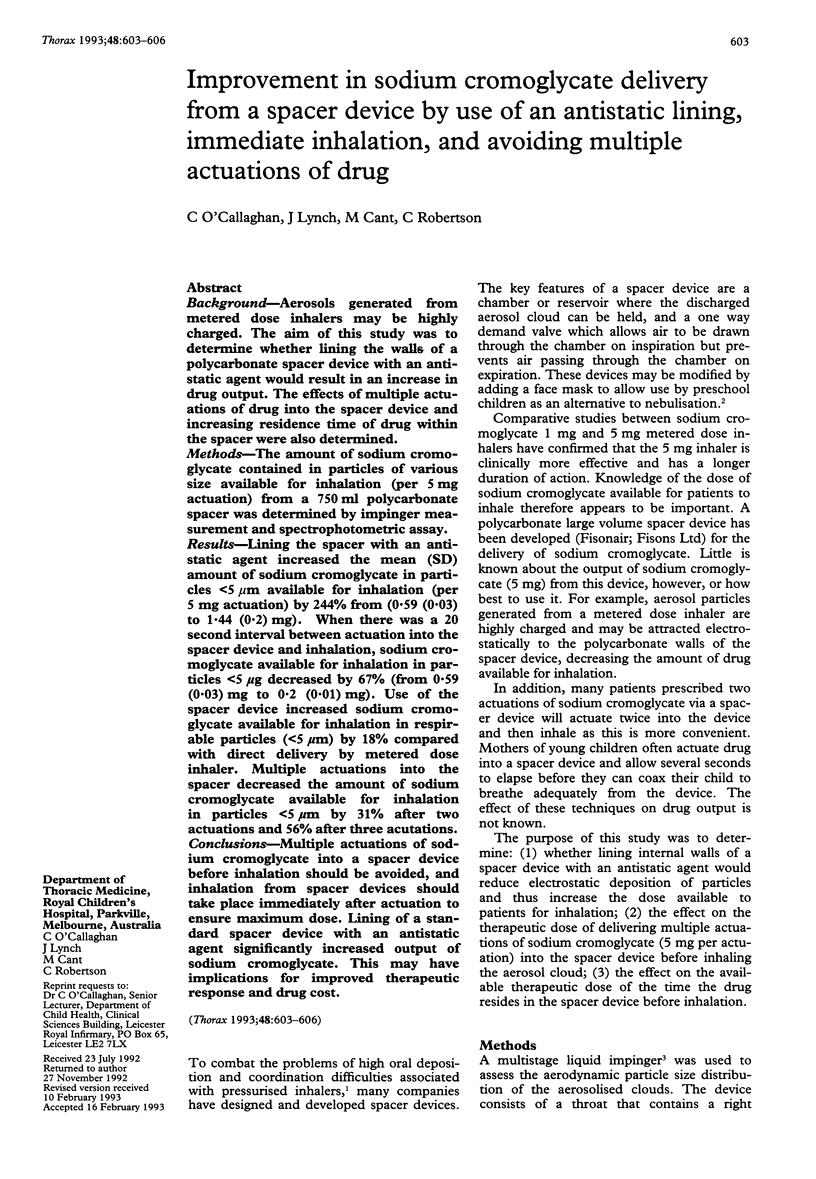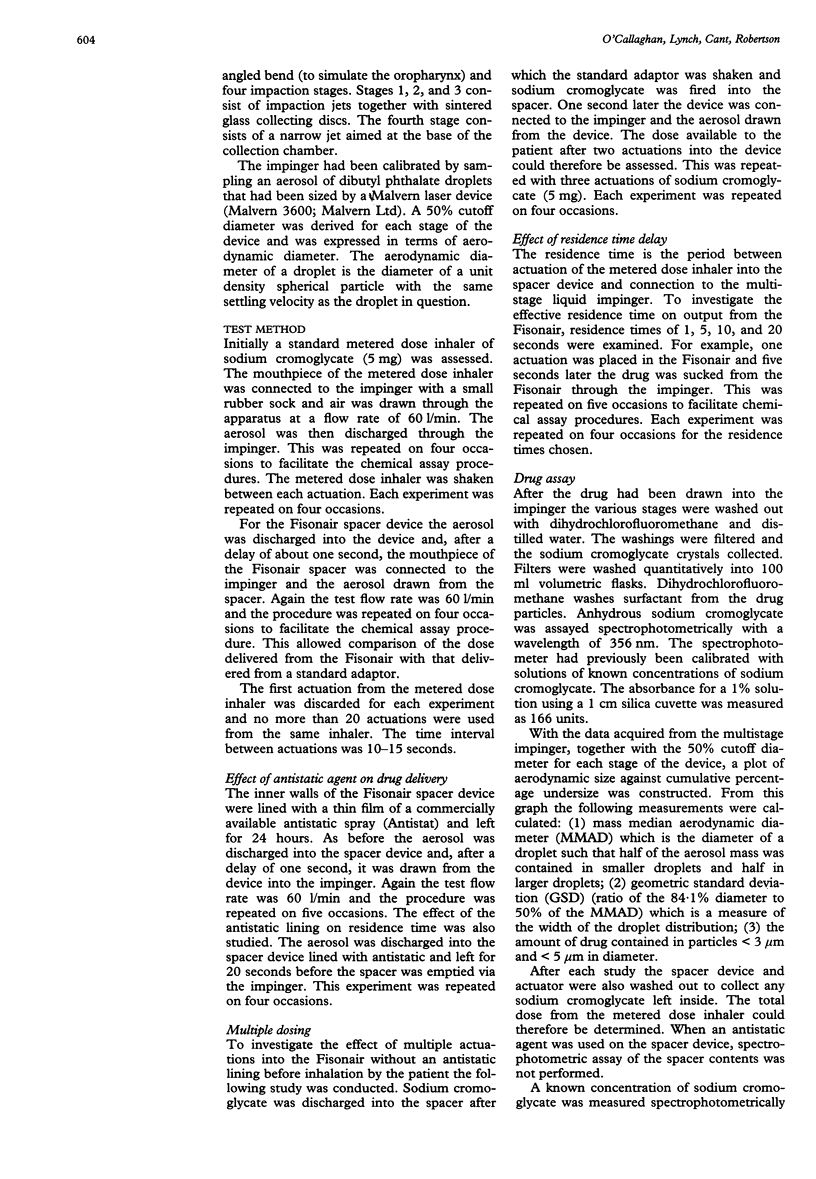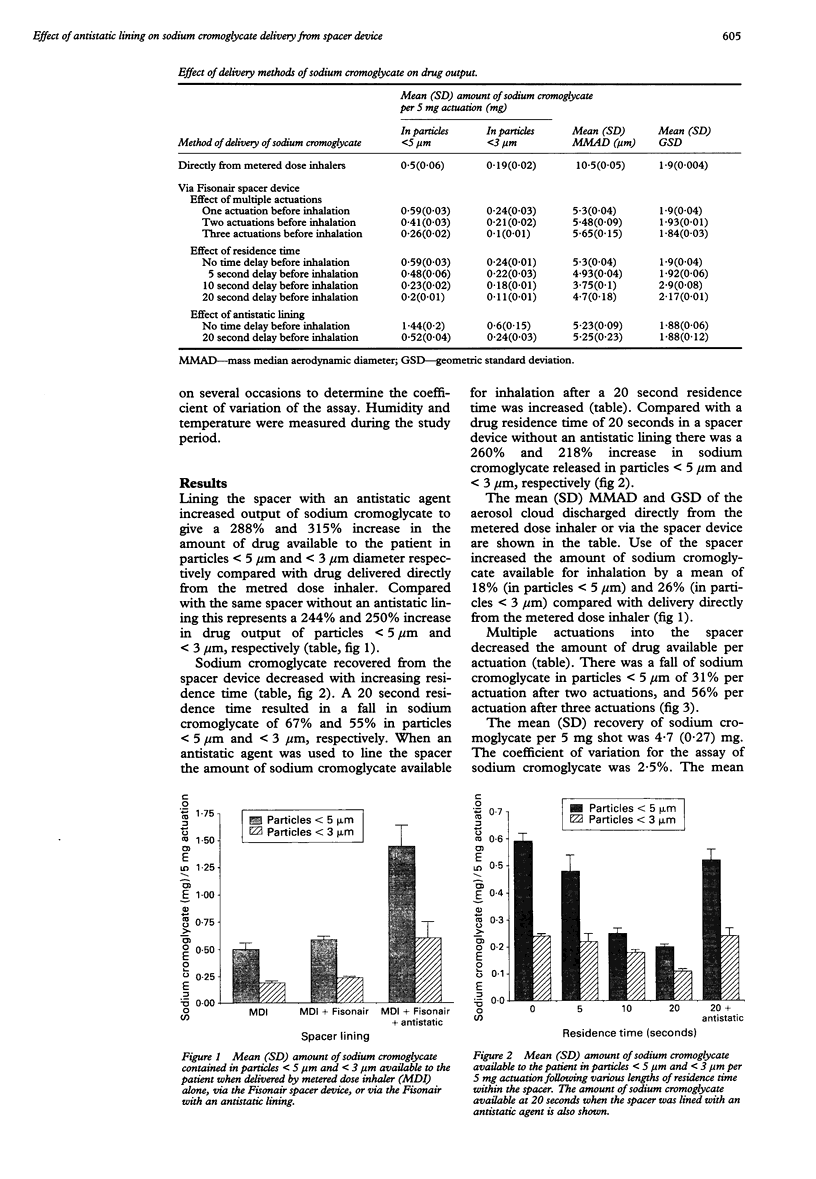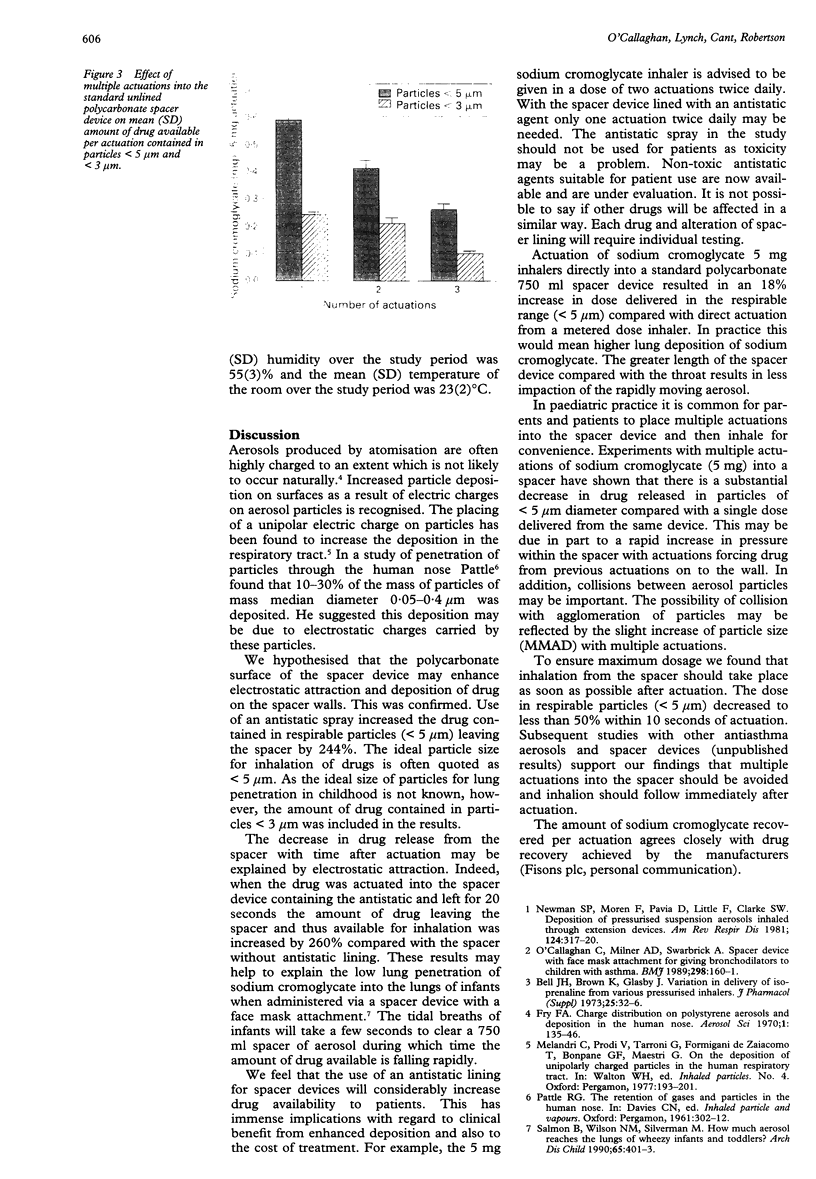Abstract
BACKGROUND--Aerosols generated from metered dose inhalers may be highly charged. The aim of this study was to determine whether lining the walls of a polycarbonate spacer device with an antistatic agent would result in an increase in drug output. The effects of multiple actuations of drug into the spacer device and increasing residence time of drug within the spacer were also determined. METHODS--The amount of sodium cromoglycate contained in particles of various size available for inhalation (per 5 mg actuation) from a 750 ml polycarbonate spacer was determined by impinger measurement and spectrophotometric assay. RESULTS--Lining the spacer with an antistatic agent increased the mean (SD) amount of sodium cromoglycate in particles < 5 microns available for inhalation (per 5 mg actuation) by 244% from (0.59 (0.03) to 1.44 (0.2) mg). When there was a 20 second interval between actuation into the spacer device and inhalation, sodium cromoglycate available for inhalation in particles < 5 micrograms decreased by 67% (from 0.59 (0.03) mg to 0.2 (0.01) mg). Use of the spacer device increased sodium cromoglycate available for inhalation in respirable particles (< 5 microns) by 18% compared with direct delivery by metered dose inhaler. Multiple actuations into the spacer decreased the amount of sodium cromoglycate available for inhalation in particles < 5 microns by 31% after two actuations and 56% after three acutations. CONCLUSIONS--Multiple actuations of sodium cromoglycate into a spacer device before inhalation should be avoided, and inhalation from spacer devices should take place immediately after actuation to ensure maximum dose. Lining of a standard spacer device with an antistatic agent significantly increased output of sodium cromoglycate. This may have implications for improved therapeutic response and drug cost.
Full text
PDF



Images in this article
Selected References
These references are in PubMed. This may not be the complete list of references from this article.
- Melandri C., Prodi V., Tarroni G., Formignani M., De Zaiacomo T., Bompane G. F., Maestri G. On the deposition of unipolarly charged particles in the human respiratory tract. Inhaled Part. 1975 Sep;4(Pt 1):193–201. [PubMed] [Google Scholar]
- Newman S. P., Morén F., Pavia D., Little F., Clarke S. W. Deposition of pressurized suspension aerosols inhaled through extension devices. Am Rev Respir Dis. 1981 Sep;124(3):317–320. doi: 10.1164/arrd.1981.124.3.317. [DOI] [PubMed] [Google Scholar]
- O'Callaghan C., Milner A. D., Swarbrick A. Spacer device with face mask attachment for giving bronchodilators to infants with asthma. BMJ. 1989 Jan 21;298(6667):160–161. doi: 10.1136/bmj.298.6667.160. [DOI] [PMC free article] [PubMed] [Google Scholar]
- Salmon B., Wilson N. M., Silverman M. How much aerosol reaches the lungs of wheezy infants and toddlers? Arch Dis Child. 1990 Apr;65(4):401–403. doi: 10.1136/adc.65.4.401. [DOI] [PMC free article] [PubMed] [Google Scholar]





